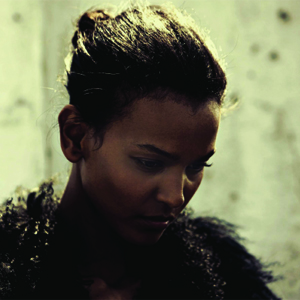 “All names in Somalia have a meaning,†explains Waris Dirie (played by Liya Kebede), in the film “Desert Flower.†Dirie’s name has the same beautiful meaning as the title of her bestselling novel and the new film about her life. Upon first appearances, the film “Desert Flower†seems to simply be a rags to riches story about a girl who is born into a nomadic life in Somalia where her family is forced to move around in order to just survive, who then later becomes an internationally celebrated supermodel.
“All names in Somalia have a meaning,†explains Waris Dirie (played by Liya Kebede), in the film “Desert Flower.†Dirie’s name has the same beautiful meaning as the title of her bestselling novel and the new film about her life. Upon first appearances, the film “Desert Flower†seems to simply be a rags to riches story about a girl who is born into a nomadic life in Somalia where her family is forced to move around in order to just survive, who then later becomes an internationally celebrated supermodel.
But this film has a stronger element to it than just being a Cinderella tale; it is the story of a real person born into a culture that is vastly different from the Western world, and which gives a visual to the issue of female circumcision that few people are truly aware of. Dirie lives her childhood and young adulthood with a constant physical and emotional pain from the brutal procedure she had to suffer as a child. We see her life affected throughout the film from this scarring in childhood, and it is an awakening to people who are not aware of this, or think it is something that no longer happens.
The film “Desert Flower†tells the true story of the life of Waris Dirie, played by newcomer Liya Kebede. Dirie grew up in Somalia and is discovered by a fashion photographer one day while working at a fast food restaurant in Britain. The film is a little clumsy in the way that it flips back and forth from Dirie’s past in the Somali desert to her life in Britain, primarily relying on visual clues to make the transition, such as showing her stare into a window and then cutting to a flashback scene without a fade in or an overlaying of sound from scene to scene. The scenes in Somalia, which show us Dirie’s childhood are captivating, showing a young girl traveling across the desert alone in order to get to a city in hopes of a better life.
It’s hard to watch Dirie walk the streets of London trying to find a safe place to sleep and eating out of garbage cans, but when we see her as a child crossing the desert alone, her feet blistered and cut, it is truly heartbreaking. This vast difference of life in the West and life in Africa is the backdrop of the film and makes you stop and think about the great advantages we have here in the West, even when we are down and out. It shows that Dirie never complains and loses hope. That fortitude is one of the remarkable traits of her story.
In terms of filmmaking, there are a few unnecessary handheld shots when we follow Dirie in the streets, which instead of bringing realism to the scene, just come off as shaky and distracting. The other bothersome aspect of the film is the pacing, where it drags in between the action with a lot of shots of Dirie walking from place to place which could have been cut. Writer/Director Sherry Horman shows a passion with respect to Dirie and the subject matter of this film by not sidestepping any scenes which could be hard to watch or controversial, but by relaying her story with as much truth and realism as possible.
The cast of the film includes the funny Juliet Stevenson as Dirie’s modeling agent, the talented Timothy Spall (“Harry Potter and the Half Blood Prince,†“Sweeney Toddâ€) as the fashion photographer, and Sally Hawkins as the newfound friend who brings laughter and much needed help to Dirie’s life. Of course, the star of the film is Liya Kebede, who in her first lead role makes a heartfelt effort to bring sincerity to the part of Waris Dirie. Although there is a solid cast in this film, it is not the case of the cast propping up Kebede, as she holds her own quite well. Even in emotionally-trying scenes, she is believable and may just move you to tears.
“Desert Flower†takes us on a roller coaster ride of emotions, bringing us up with the funny scenes of Dirie and her naive beginnings in the modeling industry, and taking us down with the ugly realism behind female circumcision / female genital mutilation. There are some scenes that are so hard to watch you want to close your eyes. These scenes will surely leave a mark upon your memory as much as it leaves a scar on the girl’s bodies who suffer this horrible mutilation. This is an important film for the girls affected by this brutal tradition, and the statistics at the end concerning the girls affected by it will surely raise awareness to a new generation.

Leave a Reply